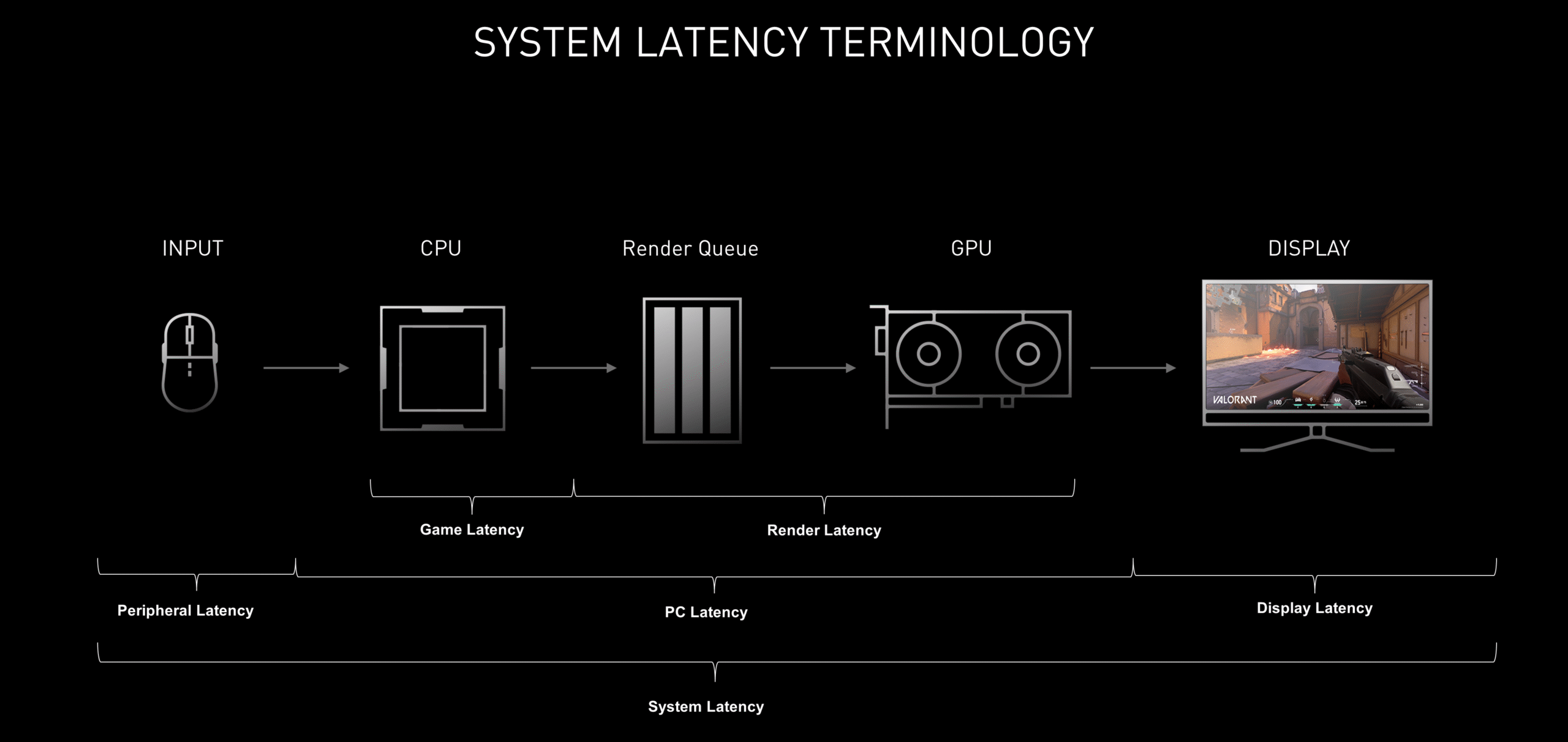What is the Latency of a System? Uncover Key Insights
What is the latency of a system? If you’ve ever found yourself frustrated by a slow-loading website or a lagging video stream, you’re not alone.
Whether you’re a tech enthusiast, a business professional, or just someone who enjoys seamless online experiences, understanding system latency is crucial. This seemingly small factor can have a significant impact on your digital interactions, affecting everything from your daily browsing to the success of your online business.
Imagine clicking a link and waiting seconds that feel like minutes for the page to load. That delay, that pause, is what we call latency. It’s more than just a minor inconvenience; it’s a critical component that can influence your satisfaction and productivity. But why does latency happen? And more importantly, how can you minimize it to enhance your digital life? Stay with us as we unravel the mystery of system latency and equip you with the knowledge to make informed decisions that can improve your online experience. Whether you want to optimize your personal setup or ensure your business runs efficiently, understanding latency is your first step. Let’s dive into the world of latency and discover how it shapes your digital interactions.

Credit: www.geeksforgeeks.org
Latency Basics
Understanding latency is crucial for system performance. It affects how quickly a system responds. Lower latency means faster response. This is vital for users and applications. Let’s delve into latency basics.
Definition Of Latency
Latency measures delay in a system. It’s the time taken for data to travel. From input to output, latency is the wait time. It involves processing and transmission delays. Lower values indicate efficient systems.
Importance In System Performance
Latency impacts user experience. High latency causes lag and frustration. Users expect quick responses. In gaming, low latency is crucial. It ensures smooth gameplay and interaction. In finance, speed is critical. Low latency enables faster trades.
Businesses rely on quick data processing. Websites with low latency load faster. This improves user satisfaction. High latency can lead to lost customers. In competitive markets, efficiency matters. Reducing latency boosts performance.

Credit: www.nvidia.com
Types Of Latency
Understanding the types of latency is crucial for system efficiency. Latency refers to the time delay between a request and a response. It affects user experience and system performance. There are different types of latency. Each type impacts a system in unique ways. Let’s explore these types.
Network Latency
Network latency is the delay in data transmission. It occurs between devices over a network. High network latency causes slow data transfer. This can frustrate users. Factors like distance and bandwidth influence network latency. Lowering this latency improves speed and responsiveness. Fast networks provide a smoother experience.
Disk Latency
Disk latency refers to the delay in data retrieval. It happens when accessing data from a storage device. Hard drives and SSDs experience disk latency. Speed and efficiency depend on drive type. SSDs generally have lower latency than hard drives. Reducing disk latency speeds up data access. It enhances the overall system performance.
Cpu Latency
CPU latency is the delay in processing tasks. It occurs when a CPU executes commands. CPU latency affects a computer’s speed. Efficient CPUs have lower latency, leading to faster task completion. Optimized software can reduce CPU latency. This results in improved computational efficiency. A well-performing CPU enhances user satisfaction.
Factors Affecting Latency
Latency is the delay before a transfer of data begins. It is crucial in systems where speed is essential. Many factors can affect latency. Understanding these factors can help improve system performance.
Hardware Components
Hardware plays a significant role in system latency. Fast processors handle tasks quickly. Slow processors cause delays. Memory speed also affects latency. More RAM can reduce delays. Hard drive types matter too. SSDs are faster than HDDs. Efficient cooling systems are important. Overheating can slow down performance. Quality of cables and connections impacts latency. Poor connections can increase delay.
Software Optimization
Software efficiency is vital for reducing latency. Well-written code runs faster. Optimize applications for better speed. Avoid unnecessary operations. Regular updates improve software performance. Clean code can minimize latency. Efficient algorithms process data swiftly. Use lightweight frameworks for quicker response times.
Network Conditions
Network conditions greatly influence latency. Bandwidth availability affects speed. High traffic can cause delays. Distance between nodes impacts latency. Shorter distances mean faster data transfer. Network congestion slows down communication. Reliable connections reduce latency issues. Use wired networks for stable performance.

Credit: www.geeksforgeeks.org
Measuring Latency
Understanding and measuring the latency of a system is crucial for ensuring optimal performance. Latency refers to the time delay from the moment a request is made until a response is received. Whether you’re streaming a video or loading a webpage, latency impacts your experience. Reducing latency can significantly enhance user satisfaction. But how do you measure it effectively?
Tools And Techniques
There are various tools available to measure system latency. Tools like Pingand Tracerouteare widely used for network latency. They provide insights into the time it takes for data packets to travel from one point to another.
For application-specific latency, tools such as New Relicand Dynatracecan be very effective. These tools monitor application performance and provide detailed reports on latency issues.
Using a combination of these tools can give you a comprehensive view of where delays occur. It’s like having a map that guides you to the exact points of congestion.
Interpreting Results
Once you have your latency data, interpreting it is the next step. Look for patterns in your data. Are there specific times when latency spikes? Identifying these patterns can help pinpoint underlying issues.
Consider the impact on your users. A small increase in latency might not seem significant, but it can lead to user frustration if it affects a critical operation. Understanding the user experience is key to determining the priority of the issue.
Use the results to guide your improvements. Are there certain actions you can take to reduce latency? Perhaps optimizing your server configuration or upgrading your network infrastructure could be the answer.
Have you ever experienced a frustratingly slow website? That’s latency in action. By measuring and interpreting latency effectively, you can ensure your users don’t face the same frustration.
Reducing Latency
Latency in a system refers to the delay before a transfer of data begins following an instruction. Reducing latency enhances system performance, ensuring faster data processing and smoother user experiences. Efficient data handling minimizes waiting times, making operations more seamless.
Reducing latency in a system is vital for efficiency. A system with low latency responds faster. This enhances user experience and productivity. There are ways to reduce latency. Consider hardware upgrades, software tweaks, and network improvements. Each method plays a crucial role.Hardware Upgrades
Upgrading hardware can significantly lower latency. Faster processors speed up data processing. Solid-state drives offer quicker data access than traditional drives. More RAM allows smoother multitasking. New graphics cards enhance visual performance. Hardware changes often bring immediate results.Software Tweaks
Software adjustments also reduce latency. Keep software updated for best performance. Optimize settings for faster processing. Disable unnecessary startup programs. Use lightweight applications to save resources. Efficient coding can streamline operations. Regular maintenance helps keep systems fast.Network Improvements
Network upgrades improve latency too. Use faster internet connections. Switch to fiber optics for better speed. Optimize routers for maximum efficiency. Reduce network congestion with proper management. Ensure that cables are in good condition. Network changes can significantly boost speed.Impact On User Experience
Latency in a system affects user experience by causing delays in response times. Users may become frustrated with slow loading pages. Quick system responses enhance satisfaction and engagement.
Understanding the latency of a system is crucial because it directly impacts user experience. Latency refers to the delay before a transfer of data begins following an instruction for its transfer. When latency is high, it can lead to frustrating experiences for users, affecting how they perceive and interact with your application or service. Whether it’s a split-second delay in a game or a slow loading product page, these moments can make or break the user’s engagement and satisfaction.Real-time Applications
In real-time applications, latency is the enemy. Imagine using a video conferencing tool where your voice and video are seconds behind. It disrupts the flow of conversation and makes effective communication almost impossible. Users expect these applications to be as close to live interaction as possible. To keep them satisfied, it’s vital to minimize latency through efficient coding and robust server infrastructure.E-commerce Platforms
In the world of e-commerce, every millisecond counts. If your product pages load slowly, potential customers might click away before making a purchase. This latency can be the difference between a sale and an abandoned cart. Users expect seamless browsing and checkout experiences. Optimizing server responses and using content delivery networks can significantly enhance their experience.Gaming Systems
Latency in gaming is a notorious deal-breaker. A delay in response time can mean the difference between winning and losing in fast-paced games. Gamers demand real-time interaction without lag, especially in multiplayer environments. Developers must ensure servers are geographically distributed and optimize code to reduce latency, keeping players engaged and satisfied. Have you ever abandoned a site or an app because it was just too slow? You’re not alone. Users today have countless options and little patience for delays. Understanding and addressing system latency is not just a technical need but a business imperative. By doing so, you enhance user satisfaction, build loyalty, and ultimately drive success.Future Trends
Latency plays a crucial role in today’s tech-driven world. As technology advances, understanding latency becomes more important. This helps us prepare for future trends in the tech landscape. Exploring these trends sheds light on what lies ahead for latency management.
Emerging Technologies
Emerging technologies significantly impact system latency. Quantum computing is one such technology. It promises faster data processing. This could reduce latency in complex computations. Blockchain technology also affects latency. It ensures secure and quick transactions. As these technologies develop, they influence latency in various systems.
Latency In 5g Networks
5G networks aim to reduce latency to a few milliseconds. This is a significant improvement over 4G. Lower latency enhances real-time applications. It benefits gaming, virtual reality, and autonomous vehicles. 5G networks support faster data transfer. This results in a seamless user experience.
Ai And Latency Management
Artificial Intelligence plays a key role in managing latency. AI algorithms predict and mitigate latency issues. They optimize network traffic and resource allocation. Machine learning models identify patterns in data flow. This helps in reducing latency. AI-driven systems adapt to network changes. They ensure smooth and efficient operations.
Conclusion
Understanding system latency is crucial for smoother operations. It affects speed and efficiency. Lower latency means quicker responses. Businesses can improve performance by reducing latency. Faster systems lead to better user experiences. Analyze and optimize your system to minimize delays.
Regular checks help maintain efficiency. Always aim for lower latency in your systems. This ensures faster processing and happier users. Keep latency in mind for future system improvements. It’s a key factor in enhancing technology performance. Explore ways to reduce latency today.
Embrace the benefits of efficient systems.




